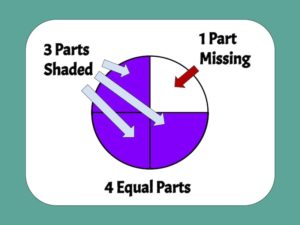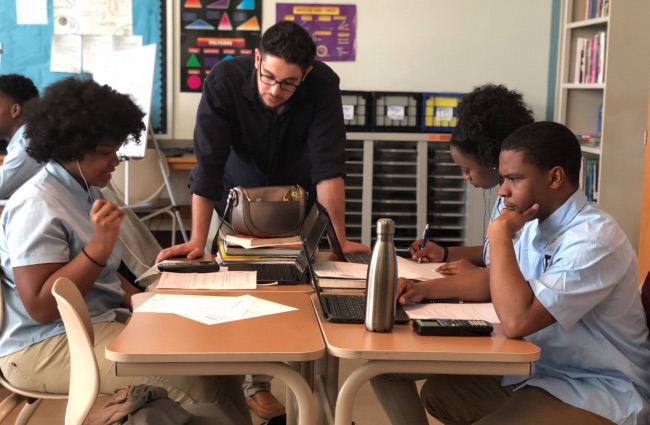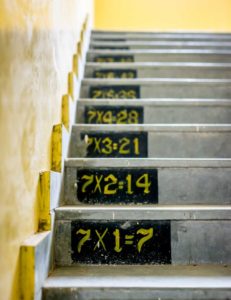
How to Teach Fractions: 4 Strategies for Student Success
Knowing how to teach fractions can make all the difference for student mastery. Follow these tips to build your students’ conceptual understanding.

Before I’d ever heard of self-paced learning, I started my teaching practice using a traditional lecture model. I sat in front of the room, moved at a fixed pace. I’d lecture. Much like most young teachers do.
I thought I was running an efficient and effective classroom. And the reason I thought so is because I was able to cultivate positive relationships with students.
In Hawaii, the cultural expectation is that you don’t ever challenge authority. And as a result, students may not have enjoyed the class period, or understood anything that was going on. But they were conditioned to not bring awareness to that. It was viewed as disrespectful.
So as a result, I was creating what I like to call “compliant disengaged classrooms.” Kids listened to instructions, and they weren’t causing behavior issues, because they respected me. But that wasn’t leading to any authentic learning. So I spent many years in the classroom thinking that I had built the learning environment that I was supposed to build.
It wasn’t until I transitioned to teaching in Washington, D.C. that I realized my instructional model was terribly ineffective. I would build and prepare this detailed lecture. I’d go up there and start talking and writing on the board only to turn around and see that something was wrong. Some students had their heads down. Others had this kind of terrified look on their faces.
Four to five students were calling out every two to three minutes that they didn’t have any idea what was going on.
And I remember my whole body would get tense and I would start sweating. After the lesson, I would sit there and think, “I have an unconquerable task in front of me. I have kids that are bored and kids that are furious that I can’t reach them.”
They were telling me quite clearly that I’m not doing my job as an educator. I’m failing to reach them and meet their needs.
They would articulate that, and I was stuck. I just had no idea what to do from there. In Hawaii, you could get away with below average instruction because kids are not expressing their issues.
So my first three years of instruction, I wasn’t actually grading on mastery. When you’re grading on completion, It’s pretty easy to convince yourself, your school, and your administration, that learning is happening, even when it’s not.
When students would take tests, they wouldn’t score that highly. Well that just fit the expectation that, oftentimes, we have of students in low income communities. It didn’t raise any red flags, because you’re just falling into the same pattern that everyone else is.
Once I started grading students on mastery I realized, and was horrified by, what I had been conditioned to in my previous practice.
I was creating a world where I was telling kids that they were doing well. I was telling myself that they were doing well. But I was really just sweeping problems under the rug.
In a traditional setting, teachers think that the way you differentiate instruction is by scaffolding. And I actually think that’s the most backwards way of maintaining high expectations. If you’re a student with special needs, or simply have trouble learning content quickly, I’m going to just make this assignment easier. And what you’ve done is you’ve told that student that they actually can’t achieve what their peers can.
In a self-paced environment you don’t value speed, you value mastery. So instead of scaffolding the rigor of an assignment, now I’m saying I’m going to scaffold the time you’re given. I think that’s a huge distinction.
I had a student, Alana, who was having a ton of trouble. She would sit in class, and hear me introduce content. Words like ‘scatter plot,’ ‘x axis,’ or ‘plotting points,’ simply didn’t mean anything to her. She didn’t have the foundations to make sense of what we were talking about.
So when I transitioned to a blended environment, Alana and I had a deal. She watched the first part of the video, to get all the necessary vocabulary and basic skills. Then she’d come to me as soon as it got to the problem-solving part.
Her story is a perfect example of an environment where the student owns her own learning. She has the capacity to articulate what’s difficult, and what’s easy. And she can personalize her own experience.
In a traditional setting, teachers spend an incredible amount of time on the parts of instruction that are easiest. And it also becomes the most exhausting, right? Delivering vocab through a lecture is tiring. You’re putting on a performance at an extremely low level. That part can very easily translate to a blended scenario.
It’s not like students learn better with videos than they learn by watching a lecture. It’s the fact that I am now free to actually communicate with students in a personal way. I can figure out what they truly need to excel. It unleashes you to start engaging in the richest and most exciting aspects of the teaching and learning.
So blended instruction is not the choreograph to mastery, it is the tool to facilitate self-pacing. If you think technology is going to create mastery, then you don’t understand the core richness of learning.
What I learned from Alana is that the importance of getting to a place where we’re discussing problems. As a teacher, I initially thought, if you could just watch this thing or listen to me lecture and then do the problem quickly, I did my job. It’s actually the opposite. The faster we get into a discussion that’s problem-based, the more likely you are to learn.
I feel like as an educator we work in silos. Everything that we feel good about in our classroom is about the impact we’re making on our own students.
But now I’ve shared this model with eight teachers and I’m about to share with 25 more. That’s definitely the most exciting aspect of my experience as an educator. Helping other educators build a classroom environment that cultivates mastery. One that’s more sustainable, efficient and effective.
And I think it is really cool to be able to do that by responding to demand as opposed to creating demand. A lot of innovations we try to force. I was just responding to folks who are asking how they could recreate what I was creating in my classroom.
It all started when I won the D.C. Public Schools Excellence in Classroom Innovation Award. They actually made a video about my classroom. It was after that award that I started getting inundated with requests. Teachers, principals, and other stakeholders all wanted to understand and learn the model. And that’s what prompted the creation of the non-profit. I used the award money as the seed funding for the Modern Classrooms Project. From there it just snowballed.
So the way that we work around this is we identify, in each of our units, what we call our “must do,” lessons. Students must master these to progress through the course.
We also identify the “should do” lessons. These are ones we would like them to master if they came to us on grade level. And then we create what we call our “aspire to do” lessons.
And we make sure to recognize that our “aspire to do” lessons aren’t more rigorous than our “must do” lessons. It just covers broader areas of content. Things that you don’t necessarily need to move through high school or middle school.
I would also add that we only self-pace within each unit of study. I think this is a really big distinction that you don’t see in very many self-paced models. You need to create a space for students to get fresh starts. You need to scaffold self-pacing so that kids are only self-paced for a certain chunk of time. So a student or a classroom might be self-paced for six lessons at a time. Four lessons are “must do.” one’s a “should do,” and one’s an “aspire to do.” Then they transfer to the next unit.
That also allows for a space where students aren’t missing out on huge sections of content. And we’re finding that the ability to self-pace is more challenging and more rewarding than the actual academics.
We love sharing stories like this one, of innovative educators finding ways to engage, challenge, and support young learners.
To stay up to date on in the latest in student-centered learning, sign up for our free Educator’s Newsletter. It’s a weekly dose of education inspiration, straight to your inbox!
And don’t forget to share your thoughts in our Facebook group, The Reflective Teacher’s Community. Share ideas, ask questions, and connect with passionate educators like you.
We believe that every student deserves a learning experience that matches their interests and needs. Shouldn’t professional learning experiences meet that same high standard? Visit our services page to learn more about how we help teachers take charge of their professional growth.
 Kareem Farah is an educator and the executive director of The Modern Classrooms Project. His approach to self-paced learning was recently featured on Edutopia. Connect with him on twitter @Kareemfarah23.
Kareem Farah is an educator and the executive director of The Modern Classrooms Project. His approach to self-paced learning was recently featured on Edutopia. Connect with him on twitter @Kareemfarah23.

Knowing how to teach fractions can make all the difference for student mastery. Follow these tips to build your students’ conceptual understanding.

Essential reading for every math teacher! The meanings of multiplication support student engagement, conceptual understanding, and success with word problems.

Teaching word problems takes more than key words. The Polya Process helps your students think strategically and make sense of story problems.